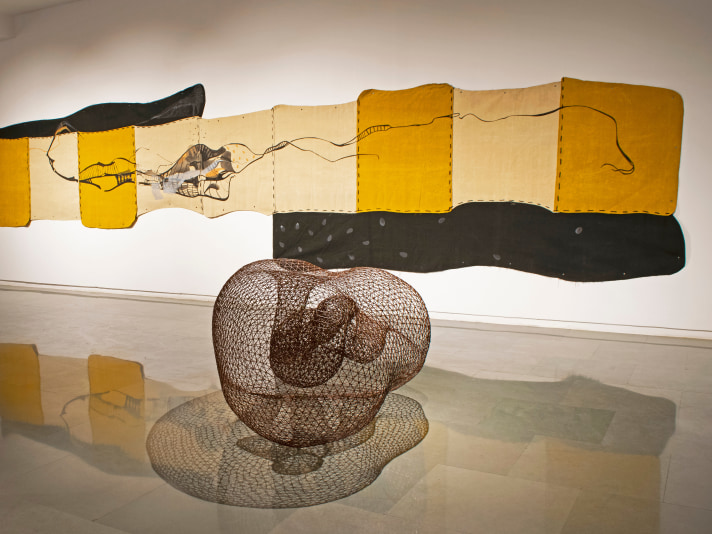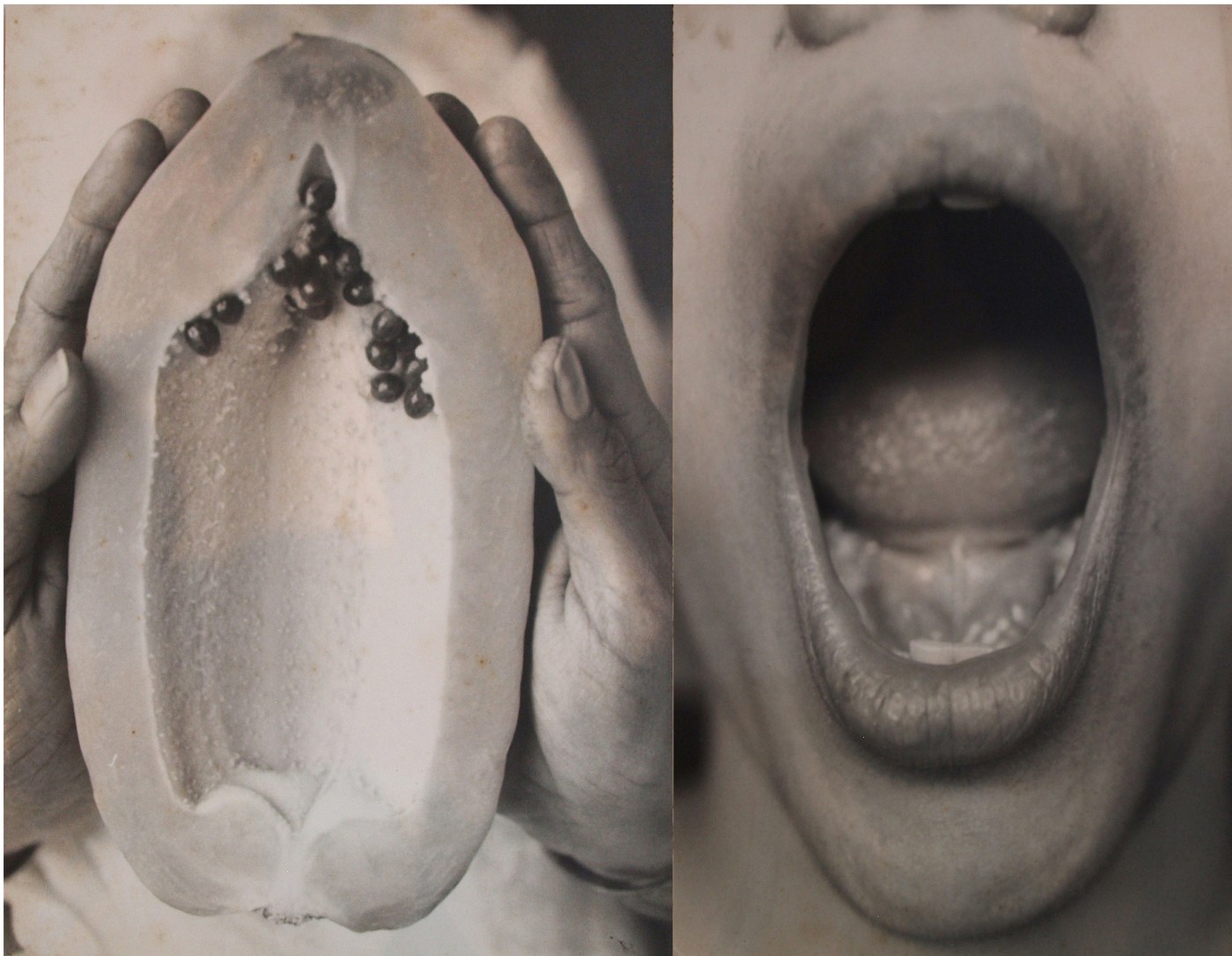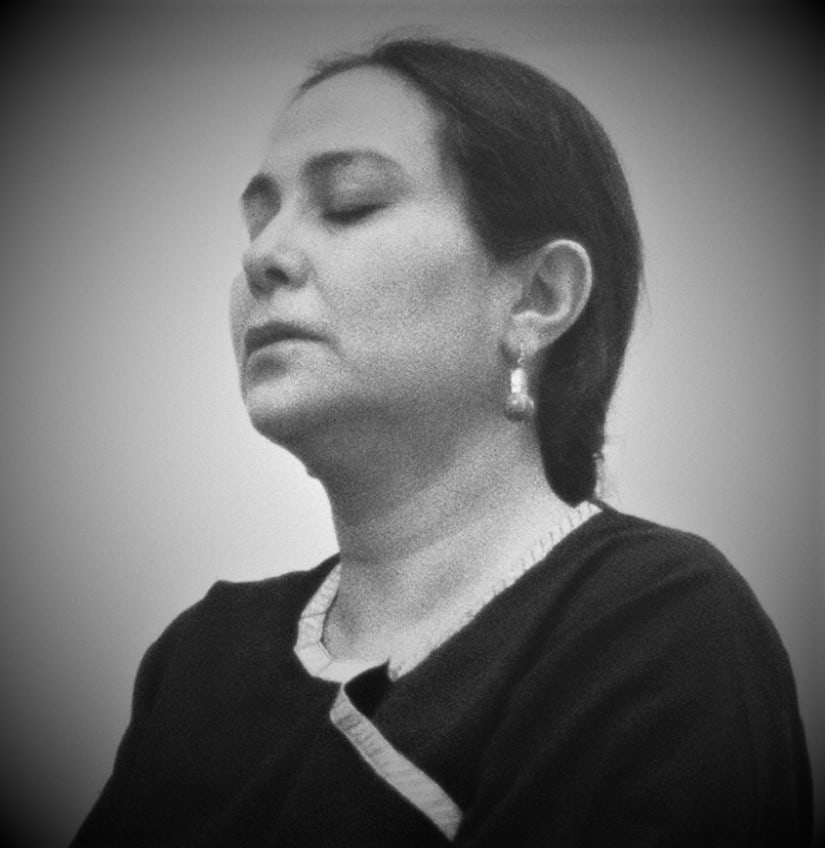
Once religious identity has begun to matter, the point is to make it matter in a conscious and dialectical way, as a play of contradictions where the carefully honed and regardful actors transcend the play with the aid of history itself. Rummana is one such actor. And hereby she not only pitches her identity for display, she constructs a public space for debate.
Geeta Kapur

Home/Nation, 1996 (detail)
Rummana Hussain's oeuvre exists in two parts—one, her early figural works on canvas and paper from the 1980s, and the other her pioneering installations, sculptures and performance works that were among the first in India. During the early 1990s Hussain increasingly turned away from the materials of traditional "high" art, appropriating the material of domestic work—gheru, indigo, terracotta—as creative tools. Digging past the archaic symbolisms that at the time surrounded the female body - woman as a pure virgin, as the body of a new Indian nation state, as mother-guider—Rummana presented a view of the individual woman, in all her complexities. The arc that began with these works accelerated with the social and communal unrests of the time. Hussain’s growing comfort with plurality allowed her to further embark on multi-layered explorations of the marginalized while employing a diversity of mediums including her own body. These seminal works of Hussain - bold, poignant, and provoking, are as relevant and essential today as they were when created almost a quarter-century ago.
“Rummana’s work investigates more than just one level of experience. At it's core is her protest at the intentional subversion of a particular culture, community and gender to a patriarchally and politically hegemonic agenda.”
"Given the militantly right-wing, anti-Muslim, anti-female path that India, along with many other nations, including our own, is now following, her art is more pertinent and potent than ever. A museum should step up and give us the full scope."
Holland Cotter, The New York Times
“Rummana places herself in the space of a possible loss of that future which the earlier form of secularism celebrates. One might even say that with help of her own body she proposes to suture the social wound.”
Geeta Kapur
"Her works are a vital reminder of how activism and bearing witness can grow an art practice and hone a formal language, and how speculative counternarratives are among the most potent means of resistance."
Art Asia Pacific
"...evocations of the female body merge seamlessly with visions of scarred landscapes, alluding to battles fought on and over that body and mirroring the violent intrusion of history into the realm of the personal, the intimate, and the sexual."
ARTFORUM
"Her activist spirit haunts each piece, as well as her persistence in universalizing the personal struggle."
MINT
"Today, the profound influence she had on the generation of cultural practitioners that followed remains her most visible contribution to the Indian cultural scene."
ART ASIA PACIFIC

Rummana Hussain was born in Bangalore, India in 1952 and passed away in 1999 in Mumbai, India.
Hussain's works have been on view at various institutions around the world including Tate Modern, London, UK; 3rd Asia Pacific Triennale, Queensland Art Gallery, Brisbane, Australia; Kiran Nadar Museum of Art (KNMA), New Delhi, India; Fowler Museum, Los Angeles, CA, US; Museum Abteiberg, Germany; Smart Museum, Chicago, IL, US; Art Gallery of Western Australia, Perth; Asia Society, New York; Museum of Contemporary Art, Monterrey, Mexico; Rose Art Museum, Brandeis, MA; and the Institute of Arab and Islamic Art, New York, NY. In 1998 Rummana was Artist in Residence at Art in General, New York.
Rummana’s works were featured in the India Pavilion at the 58th Venice Biennale in 2019.